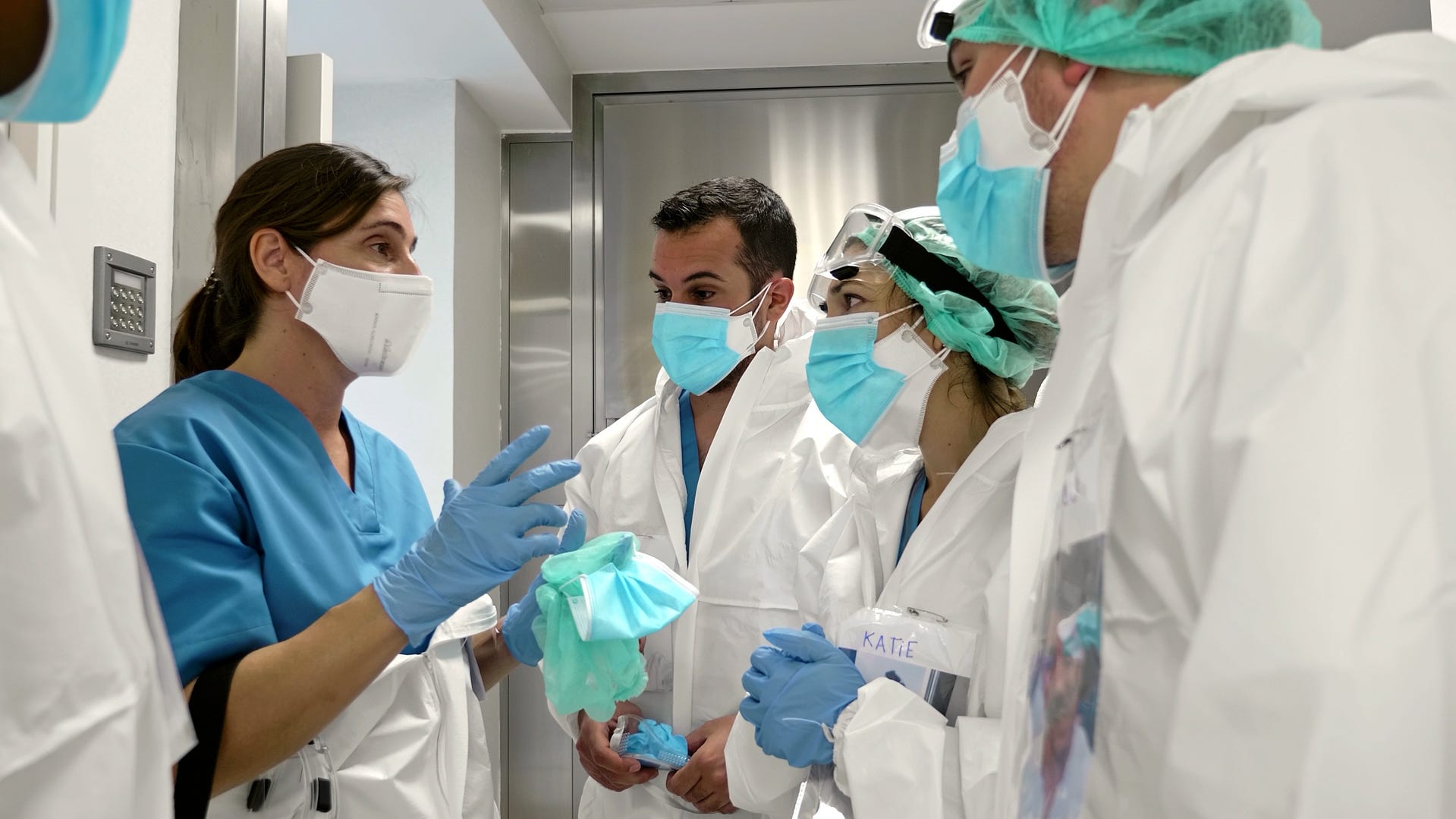Now Reading: 2025 symptoms, what to know
-
01
2025 symptoms, what to know
2025 symptoms, what to know


‘Razor blade throat’ COVID-19 variant emerges
The new COVID-19 variant carries with it a series of symptoms, including leaving those sick with a feeling of razor blades in their throat.
A new COVID-19 variant that was unheard of just months ago is now projected to be the second-most common strain in the U.S.
Variant NB.1.8.1 was first detected in China in January but accounted for about 0% of cases in the U.S. until May. By early June, it was estimated to account for up to 37%, according to the U.S. Centers for Disease Control (CDC).
The World Health Organization (WHO) evaluated the additional public health risk posed by the variant as “low at the global level in a May report, in which it also advised that currently approved COVID-19 vaccines are “expected to remain effective to this variant against symptomatic and severe disease.”
Here’s what we know about NB.1.8.1.
What is NB.1.8.1?
NB.1.8.1 is one of the latest variants of COVID-19, a “slightly upgraded version” of the LP.8.1 variant that is prominent right now, Subhash Verma, microbiology and immunology professor at the University of Nevada, Reno, previously told USA TODAY in May.
The new variant was first detected in January in China. As of mid-May, the variant had reached 10.7% of global reported COVID-19 cases, according to the World Health Organization (WHO).
Verma previously said NB.1.8.1 may be able to be transferred more easily than LP.8.1. Additionally, he said that NB.1.8.1 is able to evade antibodies created by vaccines or past infections more easily than LP.8.1.
“NB.1.8.1 is likely to spread more rapidly and evade our immune defenses more easily than LP.8.1, which is why this variant requires careful monitoring,” Verma said.
How common is NB.1.8.1?
For a two-week period starting on May 25 and ending on June 7, the CDC’s Nowcast estimates tracker shows projections for the different COVID-19 variants. According to the latest CDC data, the NB.1.8.1 strain is projected to be the second highest in the U.S., making up 37% of the total cases recorded in the U.S.
The most common strain is LP.8.1, also known as Omicron, which accounts for 38% of cases, followed by NB.1.8.1 with 37%, XFG with 8%, XFC making up 7%, and LF.7.9 with 4%.
The prominence of NB.1.8.1 in the U.S. has significantly increased in recent weeks, accounting for 0% of cases through March before reaching 2% in April, 5% in early May and 15% by late May.
What are the symptoms of NB.1.8.1?
The CDC has not outlined symptoms that are specific to the NB.1.8.1. variant. Verma said that NB.1.8.1 symptoms appear similar to those of earlier COVID-19 variants.
However, an extremely sore throat, colloquially called “razor blade throat,” has been associated with the new variant.
People with the variant have reported a feeling akin to their throats being covered with razor blades, according to the Los Angeles Times, Fox News, SF Gate, and other news outlets. Many people have also taken to social media to describe the “razor blade throat.”
The CDC outlines the following as common COVID-19 symptoms:
- Fever or chills
- Cough
- Shortness of breath or difficulty breathing
- Sore throat
- Congestion or a runny nose
- New loss of taste or smell
- Fatigue
- Muscle or body aches
- Headache
- Nausea or vomiting
The CDC advises seeking medical care if you experience any of the following symptoms:
- Trouble breathing
- Persistent pain or pressure in the chest
- New confusion
- Inability to wake or stay awake
- Depending on skin tone, lips, nail beds and skin may appear pale, gray or blue
How can you protect yourself from NB.1.8.1 and other variants?
The World Health Organization states that currently approved COVID-19 vaccines are expected to remain effective against the NB.1.8.1 variant.
In a webpage dated Jan. 7, 2025, the CDC advises that everyone over the age of six months get the 2024-2025 COVID-19 vaccine, specifically the 2024-2025 Moderna COVID-19 Vaccine.
It also suggests that people who have never received a COVID-19 vaccine, are age 65 and older, are immunocompromised, live at a long-term care facility, are pregnant, breastfeeding, trying to get pregnant, and/or want to avoid getting long COVID, should get the vaccine, especially.
However, Health and Human Services Secretary Robert F. Kennedy Jr. said on May 27 that the COVID-19 vaccine would no longer be included in the CDC’s recommended immunization schedule for healthy children and pregnant women, a move that broke with previous expert guidance and bypassed the normal scientific review process.
Under the changes, the only people who will be recommended for COVID-19 vaccines are those over 65 and people with existing health problems. This could make it harder for others who want the COVID-19 vaccine to get it, including health care workers and healthy people under 65 with a vulnerable family member or those who want to reduce their short-term risk of infection.
This could mean that some who still wish to receive the vaccine may have to pay out of pocket, if they are able to access it at all. It is not yet known how accessible the COVID-19 vaccine will be moving forward.
How to (still) get a COVID-19 test for free
Increasing Community Access to Testing, Treatment and Response (ICATT), a federal program, continues to provide free COVID-19 testing to individuals without health insurance.
According to the CDC, as of May 27, more than 19,000 locations across the country offer free testing. To find a location near you that offers free testing, visit testinglocator.cdc.gov/Search.


















































